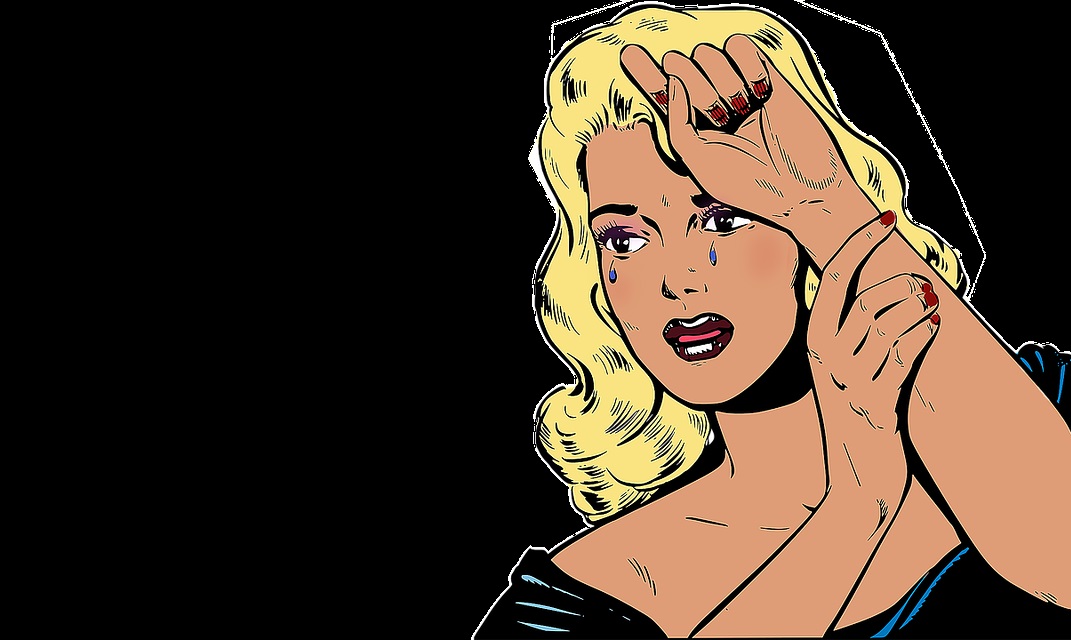
Damseling is a biologically-based behavior that’s as old as the human race. Technically speaking, the behaviour we refer to as damseling refers to any human being who announces its vulnerability to others – to husband, family, friend, stranger or to one’s tribe.
The announcement of vulnerability stimulates a neurological system in the brain of observers, thereby eliciting reflexes of protection, caretaking and nurturance typically reserved for vulnerable children and infants.
Curiously, the same neurological system can be exploited by adults who find themselves in a vulnerable situation, or by adults feigning vulnerability in order to acquire resources of protection, provision or comfort – essentially a hacking of the human operating system.
While such vulnerability can be displayed by any human, whether a child or adult of either sex, when we use the word damseling it refers especially to adult women who engage in theatrical versions of these behaviours.
The word damsel derives from the French demoiselle, meaning “young lady”, and the phrase “damsel in distress” in turn is a translation of the French demoiselle en détresse. The behaviour of the damsel in distress; her screams, her fear, her appeals for relief in the face of immanent danger, are captured in the words of Julia Kristeva who says of life in the Middle Ages, “Roles were assigned to woman and man: suzerain and vassal, the lady offering up a ‘distress’ and the man offering a ‘service.'”
Ancient mythologies around the world have captured the theme of damseling, and also the ‘parental brain’ state of the heroes who set out to rescue vulnerable maidens. While these tales are numerous, the practice of damseling did not become the centrepiece of any culture until a catering to women’s vulnerability was codified as a social expectation for men in the Middle Ages – a codification whereby men were asked to specialize as servicing agents in the role of alleviating women’s distresses. Giving birth to this idea, chivalry, courtly love, and a new sexual relations contract coalesced that placed women’s safety and comfort at the top of the hierarchy of social customs.
This gendered social development is perhaps nowhere better exemplified than in the “Enterprise of the Green Shield with the White Lady” a chivalric order founded by French knight and military leader Jean Le Maingre and twelve knights in 1399, committing themselves for the duration of five years to the protecting of all damsels in distress:
Inspired by the ideal of courtly love, the stated purpose of the order was to guard and defend the honor, estate, goods, reputation, fame and praise of all ladies, including widows.
According to his Livre des faits, in 1399 Jean Le Maingre, tired of receiving complaints from ladies, maidens, and widows oppressed by powerful men bent on depriving them of the lands and honours, and finding no knight of squire willing to defend their just cause, out of compassion and charity founded an order of twelve knights sworn to carry “a shield of gold enamelled with green and a white lady inside” (une targe d’or esmaillé de verd & tout une dame blanche dedans). The twelve knights, after swearing this oath, affirmed a long letter explaining their purpose and disseminated it widely in France and beyond her borders.
The letter explained that any lady young or old finding herself the victim of injustice could petition one or more or the knights of the ‘Enterprise of the Green Shield with the White Lady’ for redress and that knight would respond promptly and leave whatever other task he was performing to fight the lady’s oppressor personally.
During this period, men saving damsels was referred to euphemistically as love service, which saw male lovers referred to as homo ligius (the woman’s liegeman, or ‘my man’) who pledged honor, and servitium (service) to the lady via a posture of feudal homage. This growth of gynocentric specialization would later allow Modesta Pozzo to write the following:
“Don’t we see that men’s rightful task is to go out to work and wear themselves out trying to accumulate wealth, as though they were our factors or stewards, so that we can remain at home like the lady of the house directing their work and enjoying the profit of their labors? That, if you like, is the reason why men are naturally stronger and more robust than us—they need to be, so they can put up with the hard labor they must endure in our service.” (Pozzo – 1590 AD)
Such is the social ascendency of women and their ever-increasing cries of distress. Today we have a different dilemma in that damseling has evolved into a victim cult extending well beyond women. The damseling attitude now blankets much of the world with aggressive demands for redress, with social movements arising from the trope that are fomenting violence and decay within human societies. Exploiting primal reflexes, particularly those designed for parenting vulnerable juveniles, has become a runaway train with little to stop it. We can only hope that the current destruction will serve as the moment of reflection and restraint toward the damsel’s demands.
Part 2: Two Modes of Damseling
Excellent analysis–really useful and illuminating sources. Thank you!